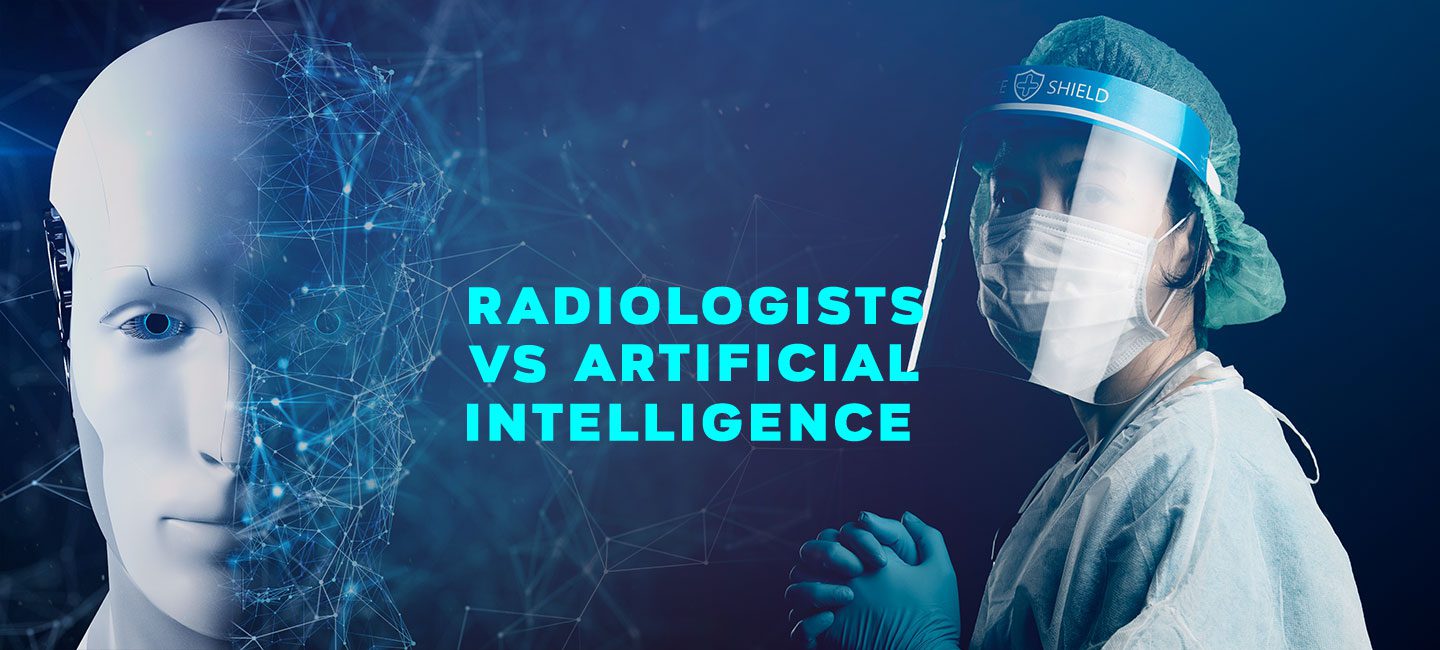Written by James Day, RDCS
Artificial intelligence is not just causing disruptions in traditionally blue-collar work. The plight of assembly line workers and drivers of 18 wheelers first comes to mind. I have collected several studies that apply to radiology and medical imaging in general- and these are all professional white-collar jobs. All studies feature artificial intelligence in its infancy as it is in 2020.

Samantha DiGrande, an assistant editor at the American Journal of Managed Care, noted the following points from this study by Ardila, et al.:
“Researchers recently conducted a study in which they trained an artificial intelligence (AI) deep learning tool to detect lung cancer tumors in computed tomography scans. The algorithm’s evaluation was then compared with that of 6 radiologists, and the results showed that the AI was more accurate when prior CT imaging was not available.” (1)
“The algorithm was tested against 6716 cases with known diagnoses and was found to be 94% accurate. The authors stressed that while the tool is still in the early stages of testing, the intention is for it to help radiologists diagnose patients, not replace them. In terms of the future of the tool, researchers will look to confirm the accuracy of AI diagnoses in larger cohorts.” (1)
Referencing this article on ChinaDaily.com, Michael Walter writes:
“An artificial intelligence (AI) system defeated a team of 15 doctors, 2-0, in two rounds of a competition that looked at the ability to diagnose brain tumors and predict the expansion of brain hematomas. The AI system, BioMind, displayed 87 percent accuracy in diagnosing brain tumors in 15 minutes, according to a report from China Daily. The doctors, from various hospitals located throughout China, displayed 66 percent accuracy in 30 minutes. Paul Parizel, MD, PhD, chair of the radiology department at Antwerp University Hospital in Belgium, said in the China Daily coverage that he sees a lot of potential in what AI can do for healthcare.” (2)
“It will be like a GPS guiding a car. It will make proposals to a doctor and help the doctor diagnose,” he said. “But it will be the doctor who ultimately decides, as there are a number of factors that a machine cannot take into consideration, such as a patient’s state of health and family situation.” (2)
In many of the studies I have reviewed there are several common threads, but I am not sure how accurate they will be as they are all grounded in the infancy of artificial intelligence. But what if we project to 2030? I see an accelerated technology that will make medical imaging more accurate but will also be seen as increasing the bottom line.
As I recall, the same thing was said in the last decade about POCUS when it was introduced and proposed to replace the stethoscope. There were several studies and the one that stands out was the training of medical students for one week in focused cardiac ultrasound to go against experienced cardiologists who were only using their stethoscopes. As it turned out, the medical students diagnosed with more accuracy using the POCUS than the cardiologists and their stethoscopes. That oft quoted study was in 2003 and it is now 2020. POCUS is everywhere, but has it totally replaced the stethoscope?
Here are some common points made in the AI Medical Imaging studies.
1) They are perfect for doing mundane, high-volume tasks.
2) Every study supports that this technology will aid the radiologist and NOT replace them.
3) The problems of implementation include FDA approval, connection to hospital records systems, and some kind of routine calibration system to keep it accurate. Further, we have HIPPA compliances issues to address.
4) Compared to older technologies, AI showed promising results in testing but when it comes to real world applications… the systems fall short.
As we move toward 2030, we will begin to see a lot more artificial intelligence installed in medical devices on the hospital floors. It truly is a game changer.
- DiGrande, S. (2019). “AI Beats Radiologists in Detecting Lung Cancer, Study Finds.” Retrieved from https://www.ajmc.com/focus-of-the-week/ai-beats-radiologists-in-detecting-lung-cancer-study-finds
- Walter, M. (2018). “AI system beats team of 15 doctors in competition.” Retrieved from https://www.radiologybusiness.com/topics/artificial-intelligence/ai-better-doctors
Looking for additional inspiration? Sign up for our POCUS Post™ newsletter to receive monthly tips and ideas.
























